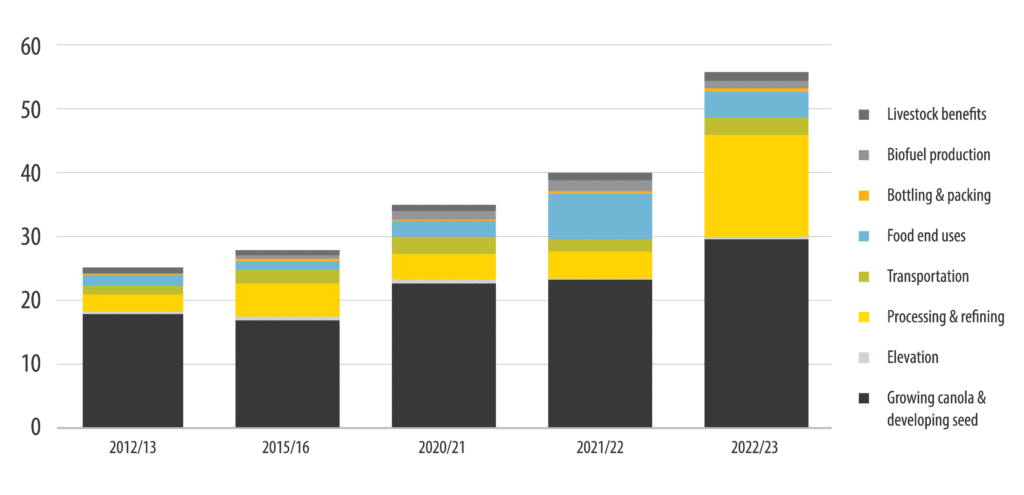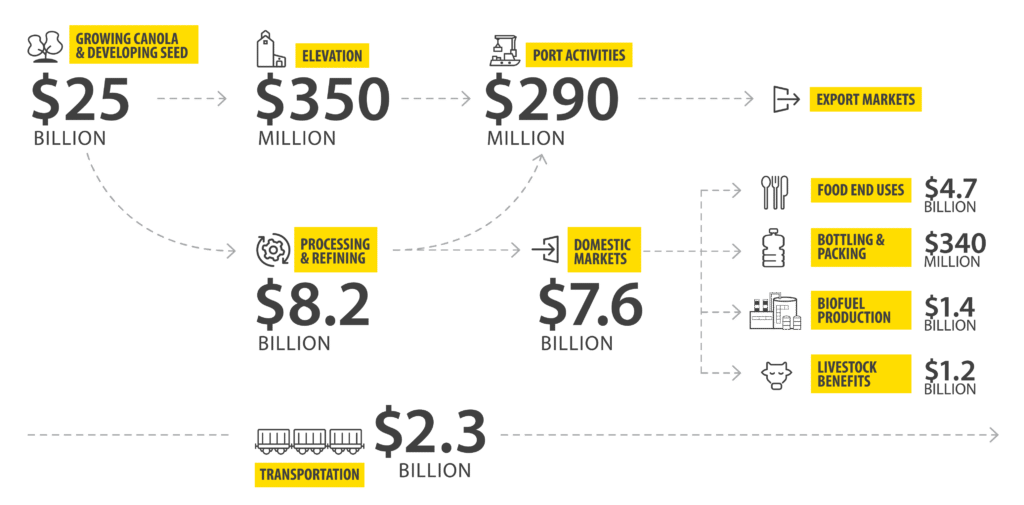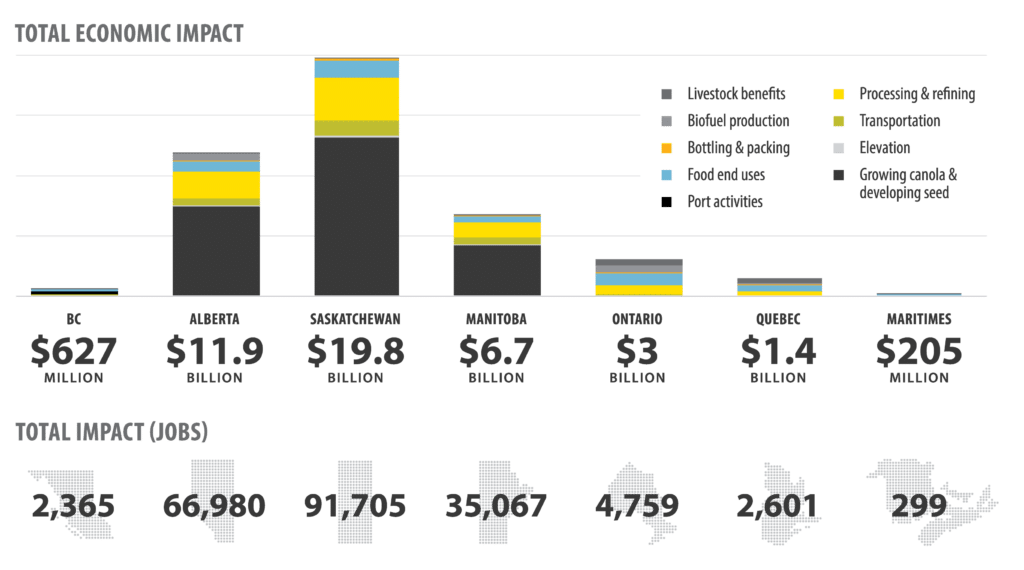Growing opportunity for all Canadians
Canola’s contribution to the Canadian economy has more than doubled in the last 10 years, according to the latest independent analysis commissioned by the Canola Council of Canada and conducted by GlobalData Plc.
For the average of the three years, 2020/21-2022/23:
- The total economic impact on the Canadian economy from the canola sector averaged C$43.7 billion per year.
- 206,000 full time equivalent jobs are supported by the canola sector, comprising almost 142,000 paid jobs and an additional 65,000 family members (beyond the growers themselves) who support and are supported by canola farming operations.
- The total wage impact of the sector averaged C$16.3 billion.

Annual averages for the period 2020/21-2022/23, including direct, indirect and induced impacts
Growth over the last decade
- Total economic impact has more than doubled, increasing by $30.5 billion.
- Domestic canola processing and refining have expanded significantly and in 2022/23, it now generates more than six times the economic impact.
- Canola-based biofuel production is an important emerging contributor to the Canadian economy, rising from $70 million to $1.1 billion in 2022/23.
Annual averages for the period 2020/21-2022/23, including direct, indirect and induced impacts
This study was funded in part through the AgriMarketing Program under the Sustainable Canadian Agricultural Partnership


